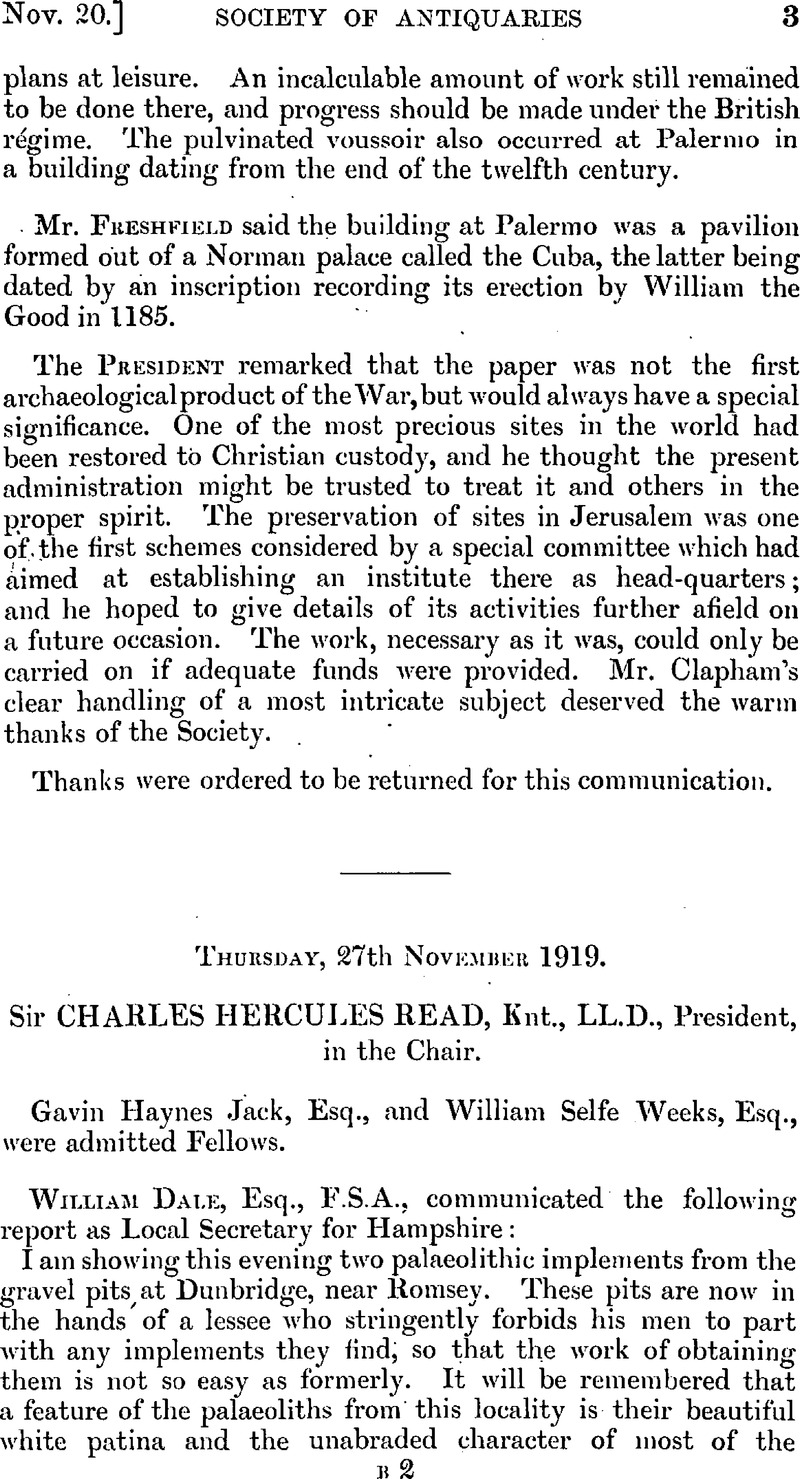No CrossRef data available.
Article contents
Thursday, 27th November 1919
Published online by Cambridge University Press: 23 March 2011
Abstract

- Type
- Proceedings
- Information
- Copyright
- Copyright © The Society of Antiquaries of London 1920
References
page 7 note 1 Journ. E. Anthrop. Inst., xxxii, 391, supplemented by his Bronze Age Pottery of Great Britain and Ireland (1912).
page 7 note 2 With plates of the finds, plan of the barrow, sketch of the burials, &c. : see pp. 30, 37, 44 (Taunton Castle, 1908).
page 12 note 1 Ten Years' Diggings, 52; dagger figured in Cat. Bateman Colin., Sheffield Museum, p. 40.
page 13 note 1 Ancient Wilts., vol. i, p. 163, pi. xvii (dagger, beaker, and oblong stone).
page 14 note 1 Ten Years' Diggings, 103.
page 15 note 1 Archaeologia Cambrensis, iv ser., ii, 327.
page 15 note 2 Archaeologia, xliii, 413 ; Jewitt, Grave-mounds, &c, fig. 155 ; Evans, Stone Impts., fig. 267.
page 16 note 1 Home Feralcs, 137, pi. ii, fig. 27.
page 18 note 1 Batemaiij Ten Years' Diggings, p. 167.
page 18 note 2 The beaker-find at Moytirra, co. Sligo, is acknowledged to be quite exceptional (Arvhaeologia, lxii, 351).
page 19 note 1 Hans Kjær, Mém. Soc. Antiq. du Novel, 1911–12, p. 324; and Nordman, C. A., Studier öfver Gånggriftkulturen i Danmark (Copenhagen, 1918)Google Scholar.
page 19 note 2 To judge by the daggers, the cists of Jutland are earlier than those of Zealand : see Kjær, Mém. Soc. Antiq. du Nord, 1911–12, pp. 306, 312.
page 20 note 1 Mém. Soc. Antiq. du Nord, 1914–15, p. 55 ; for their beakers, see Nordman, Gânggriftkulturen, pp. 64–5, 103.
page 20 note 2 A few isolated daggers of late type, worn down to a stump and evidently of Scandinavian origin, have been found in the eastern counties (Proc. Prehist. Soc. E. Anglia, i, 490; ii, 547).
page 21 note 1 Stone Age Guide (Brit. Mus.), 2nd ed., fig. 139.




